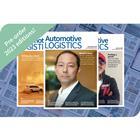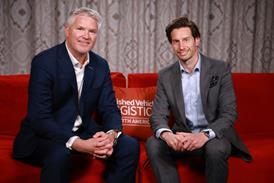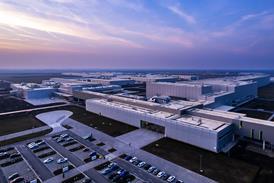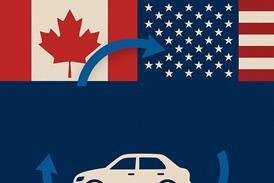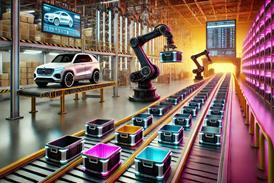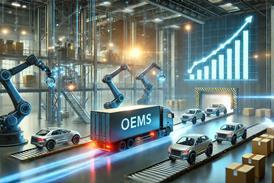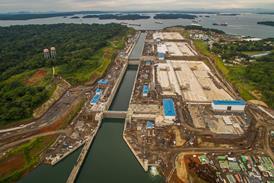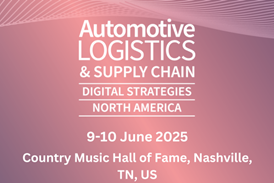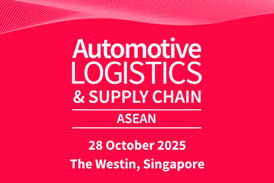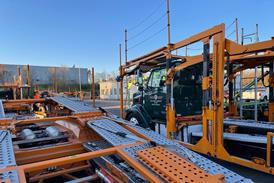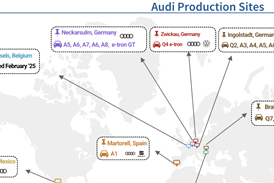In Depth – Page 37
-
 Feature
FeatureWhat took the air out of Dyson’s electric car project?
The iconic manufacturer of vacuum cleaners has cancelled plans to develop and build an EV. That was probably a smart decision, considering the huge costs, competition and struggling market that Dyson would have been entering.
-
 Feature
FeatureTangible progress: Morocco boosts automotive production and logistics
There is no doubt that shipping professionals are familiar with the Moroccan city of Tangier, as it is ranked 50th among container ports worldwide. The first container terminal opened in 2007 and has since been joined by three others; two at Tanger Med port 1 and two at Tanger Med port 2.
-
 News
NewsHail, Caesar: How ECG’s template is giving power to distribution planning
Inadequate forecasting is one of the biggest causes of inefficiency in finished vehicle logistics, but ECG’s Project Caesar is setting new standards for distribution planning.
-
 Feature
FeatureOEMs’ profit strategies today could hurt them tomorrow
Ahead of stringent EU emissions targets starting in 2020, some carmakers are pursuing strategies that actually go against what they will ultimately need to do to reduce hefty fines. This makes sense – but only for now
-
 Feature
FeatureEU fines and electric future not entirely in the hands of OEMs
In the face of government and citizens’ rising concern over climate change, vehicle emission regulations around the world are tightening, especially in Europe. In our latest business intelligence report, we forecast that carmakers will face hefty fines under tightening vehicle emission targets, driven largely by factors outside their control.
-
 Feature
FeatureOpportunities ahead for automotive OEMs and tier suppliers
The downturn in automotive sales volume creates many challenges, but the transitional state of the industry also provides many business opportunities, according to a forecast and report from Ultima Media.
-
 Feature
FeatureGreater expectations: brighter days will return for the automotive industry
Although automotive OEMs will face years of stagnant vehicle sales, a stronger recovery thereafter will bring growth back up to long run averages and herald a return to stronger profits. By then, however, the industry is likely to have undergone further consolidation.
-
 Feature
FeaturePricier, technology-laden new vehicles are driving consumers to buy used vehicles
OEMs’ own sales and technology strategies, combined with growing regulations, are leading more consumers to the second-hand vehicle market, a development that could reshape future automotive business models and distribution chains, according to a new report.
-
 Feature
FeatureRe-tooling of manufacturing plants and supply chain for EVs pose investment risk for OEMs
Tooling and conversion of automotive plants are significant costs for OEMs as they invest in electrification, which some may struggle to afford, according to a new report by Automotive from Ultima Media.
-
 Feature
FeatureElectrification poses cost and technology risk for automotive supply chain
The high R&D, production and supply chain costs of electric vehicles could mean that OEMs will be selling most at a loss for years to come, according to a report by Automotive from Ultma Media.
-
 News
NewsHarmonising the supply chain
As supply chains grow more complex, automotive companies need a reliable way to keep track of parts movements and alert them to any delays. Andrew Williams investigates a ‘visibility platform’ from German start-up Synfioo
-
 Feature
FeatureChallenges (and opportunities) for US automotive industry
As overall US vehicle sales slow down and EV sales remain stagnant, there are concerns that some OEMs are chasing new-generation technologies at the expense of their existing business – potentially setting up a ‘make or break’ scenario in the near future.
-
 Feature
FeatureEmissions regulations pose existential risk for OEMs
Escalating fines over CO2 and fuel standards, especially in Europe and China, are set to have significant impacts across the supply chain and OEM investment plans, according to a new report by Automotive from Ultima Media.
-
 Feature
FeatureTrade wars compound economic risks for automotive supply chain
The impact on tariffs and especially of uncertainty in key trading regions including the US, China and Europe are having real impacts on the automotive supply chain, according to a new report by Automotive from Ultima Media’s new business intelligence unit.
-
 Feature
FeatureEasing off the gas: Is the shipping industry ready for Sulphur 2020?
The IMO’s new regulation to cut sulphur emissions, which is coming into force next year, will require operational changes by ports and shipping lines. But some parts of the world are far from prepared.
-
 Feature
FeatureAuto industry faces lengthy decline in sales
Global new vehicle sales could face years of falls or stagnation, hurting OEM profits and putting pressure on the supply chain, according to a forecast by Automotive from Ultima Media’s new business intelligence unit.
-
 Feature
FeatureA rake’s progress in India: How one 3PL is growing rail services for finished vehicles
APLL Vascor started providing dedicated finished vehicle rail transport in India in 2014. On its fifth anniversary, the company talks to Automotive Logistics about the journey so far – and how the country’s regulatory climate is increasingly supportive of rail transport.
-
 Feature
FeatureMena: Infrastructure, policy and regulatory developments
Much of the focus on China’s Belt and Road programme has been on trade routes between Europe and Asia, but Chinese organisations are also investing in African infrastructure.
-
 Feature
FeatureShifting sands of time: The changing nature of Saudi Arabia’s automotive industry
Changes to social and economic conditions, including the recent removal of a ban on female drivers, could give a welcome boost to the automotive industry in Saudi Arabia.
-
 Feature
FeatureCan Central Asia be transformed into an automotive hub?
Two of the largest former soviet republics, Uzbekistan and Kazakhstan, have set their sights on growing an automotive sector as they industrialise and modernise their economies. These Cental Asian nations are now focusing on strengthening their supply bases to boost local production.

